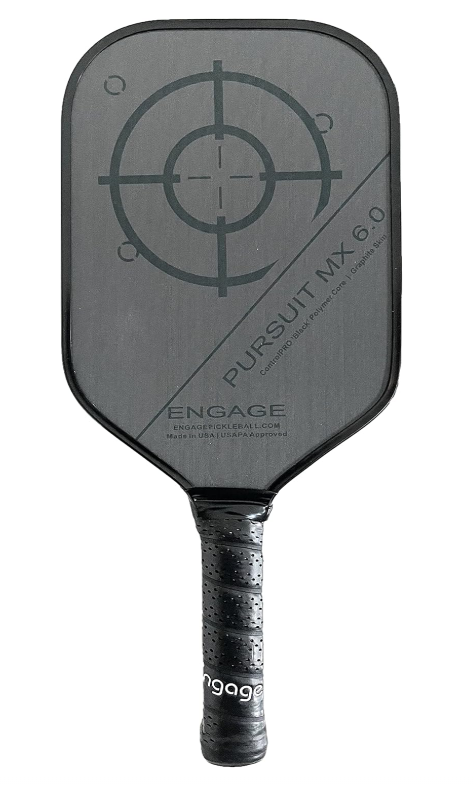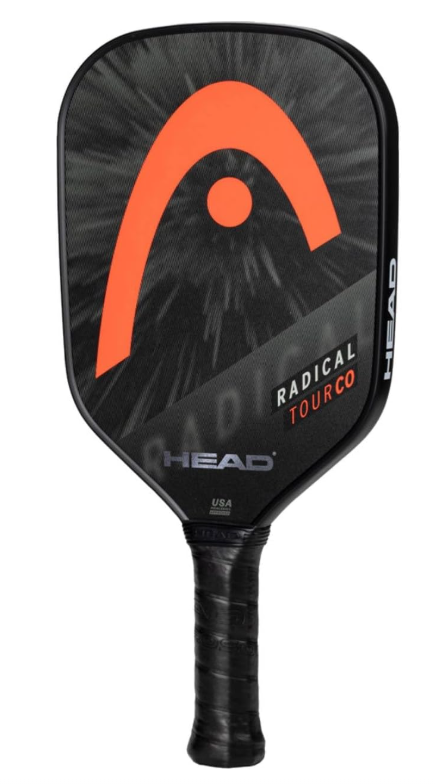2025 Guide to the Best Pickleball Paddles for Tendonitis Relief
Future-Proof Comfort, Precision Performance
When Comfort Becomes Strategy
It starts as a twinge. Then a throb. Eventually, your favorite sport begins to feel like betrayal.
Tendonitis—commonly called pickleball elbow—can sneak up on even the most seasoned players. That familiar sting in your elbow or wrist isn’t just annoying—it’s your body begging you to change something.
That “something” starts with your paddle.
This isn’t just another list of hyped-up gear. This guide is built from real player feedback, biomechanics, and material science to help you play longer, smarter, and without pain.
Let’s protect your swing—and your joy.
What Is Tendonitis in Pickleball?
Also known as lateral epicondylitis, tendonitis develops when the tendons in your forearm are overused or stressed—typically through repeated swinging, off-center hits, or improper paddle weight and grip.
The Mayo Clinic confirms: overuse and vibration from repetitive wrist extension is a major cause.
In pickleball, the common culprits include:
- Repetitive backhands with poor mechanics
- Unbalanced or too-heavy paddles
- Incorrect grip size leading to overgripping
- Off-center strikes increasing vibration
Understanding the stress chain matters. What you hold in your hand sends force all the way up to your elbow and shoulder. That’s why paddle design can either amplify the problem—or solve it.
Want to learn how paddle materials compare? Check out this guide on graphite vs. carbon fiber paddles.
Editor’s Pick: Best Paddle for Tendonitis Relief
Engage Pursuit MX 6.0 – The Vibration Vanquisher
If you want a paddle that minimizes joint pain, neutralizes vibration, and provides elite-level control, this is where to start.
✅ Best-in-class shock absorption
✅ Soft-touch polymer core + textured face for finesse and forgiveness
✅ Longer handle supports two-handed play
For many players recovering from tendonitis, this paddle is a game-changer—literally.
What Paddle Features Actually Matter?
| Feature | Why It Matters |
|---|---|
| Weight (7–8.3 oz) | Lighter paddles reduce arm fatigue but need enough heft for control. |
| Core Material | Polymer absorbs shock better than Nomex—key for joint safety. |
| Face Material | Fiberglass feels soft; graphite delivers power. Comfort comes from balance. |
| Grip Size | Too large or too small = overgripping = tendon flare-ups. |
| Handle Length | Longer handles support two-handed play = less strain. |
| Sweet Spot | Larger = fewer off-center mishits = reduced vibration spikes. |
👉 This PubMed study on vibration in paddle sports backs it up: material choice can significantly reduce injury risk.
Top 7 Pickleball Paddles for Tendonitis (Full Reviews)
ProLite Rebel PowerSpin+
It’s the paddle you pick when your elbow says “not today.”
Sleek, shock-absorbing, and scary smooth. The Rebel’s lightweight frame and fiberglass face give you control and comfort without sacrificing finesse.
✅ Pros:
- Ultra-light (7.2–7.6 oz) = minimal joint stress
- Elongated handle = two-handed support
- Shock-absorbing fiberglass face
⚠️ Cons:
- Smaller sweet spot
- Not ideal for hard-hitting singles players
👉 Don’t let pain bench you. Grab the Rebel PowerSpin+ and give your elbow the break it deserves.
Engage Pursuit MX 6.0
Whispers to your joints: “I got this.”
With best-in-class vibration dampening, this paddle is practically orthopedic.
✅ Pros:
- Elite polymer core dampens shock
- Long handle supports two-handed play
- Soft-textured face for spin and control
⚠️ Cons:
- Slightly heavier
- Premium price
👉 Vibration is canceled. Experience the Pursuit MX 6.0—your body’s new favorite teammate.
Selkirk AMPED Epic
Like slipping into orthopedic sneakers, but for your swing.
Wrapped in ergonomic comfort, this paddle is a joint-saving powerhouse.
✅ Pros:
- Ergonomic grip = reduced strain
- FiberFlex face dampens impact
- Balanced feel for all styles
⚠️ Cons:
- Not the fastest paddle for net play
- Slightly heavier than others
👉 Play harder. Hurt less. Test the AMPED Epic and swing with peace of mind.
Paddletek Tempest Wave Pro
The paddle that forgives your bad hits and celebrates the good ones.
Perfect for players who need that extra sweet spot comfort and finesse feel.
✅ Pros:
- Oversized sweet spot = mishit protection
- Lightweight graphite surface
- Exceptional placement control
⚠️ Cons:
- Less raw power
- Spin potential is moderate
👉 Say goodbye to jarring shocks. Rule the game with the Tempest Wave Pro.
HEAD Radical Tour CO
Modular power meets joint-friendly precision.
Customize the weight and feel like you’re building your paddle in a lab.
✅ Pros:
- Adjustable weight system
- Carbon fiber face = fast feedback
- Stable design for pain prevention
⚠️ Cons:
- Can feel technical for new players
- Tuning setup takes time
👉 Dial in your swing. Customize your comfort with the HEAD Radical Tour CO.
Onix Evoke Premier
The ultimate blend of finesse and feel.
Spin-heavy players will love the control—and their elbows will love the relief.
✅ Pros:
- Nomex core = light and fast
- Excellent spin potential
- Durable composite build
⚠️ Cons:
- Less shock absorption than polymer
- Not great for severe tendonitis without support gear
👉 Spin smarter. Get your hands on the Onix Evoke Premier—and get back in control.
Gamma Mirage

The low-key legend for players who’ve seen the ice pack too many times.
Gamma’s Neucore tech reduces shock without killing performance.
✅ Pros:
- Built for comfort and long sessions
- Lightweight and arm-friendly
- Great value for price
⚠️ Cons:
- Lower spin
- Basic aesthetics
👉 Your long-game paddle is here. Play longer with the Gamma Mirage.
Not Sure Which Paddle Fits You? Try This:
Use this quick scenario guide to match your symptoms or style with the right pain-friendly paddle:
Scenario-Based Paddle Selection
| If You… | Then Try… | Why It Helps |
|---|---|---|
| Feel sharp elbow pain during backhands | ProLite Rebel PowerSpin+ | Ultra-light and long-handled to reduce one-arm strain. |
| Need maximum vibration reduction | Engage Pursuit MX 6.0 | Advanced polymer core minimizes shock better than most. |
| Have wrist soreness after long games | Selkirk AMPED Epic | Ergonomic grip reduces wrist tension and fatigue. |
| Mishit often and want forgiveness | Paddletek Tempest Wave Pro | Oversized sweet spot protects against painful vibrations. |
| Want to experiment with paddle balance | HEAD Radical Tour CO | Adjustable weights let you fine-tune for pain relief. |
| Prefer spin but need less wrist torque | Onix Evoke Premier | Textured face enables spin without excessive force. |
| Struggle with full-match stamina | Gamma Mirage | Lightweight and soft-core paddle made for longevity. |
Bonus: Rehab Strategies to Amplify Paddle Impact
| Technique | Purpose |
|---|---|
| Eccentric Strength Training | Rebuild tendon resilience with slow-lengthening movements. |
| Two-Handed Backhands | Distribute force across both arms. |
| Compression Braces | Reduce tendon strain during play. |
| Stretching & Warmups | Prepare tendons to withstand impact. |
| Progressive Load | Return gradually to intensity to avoid flare-ups. |
👉 Starting slow? Explore beginner pickleball drills that won’t stress your elbow.
Where Paddle Technology Is Headed (2030 Forecast)
We’re entering the age of adaptive ergonomics:
- Smart Paddles: Grip sensors, fatigue monitors, vibration alerts
- AI Stroke Coaching: Real-time feedback via paddle-connected apps
- Dynamic Core Materials: Shape-shifting cores that adjust to impact
- Community Injury Mapping: Crowdsourced data that guides paddle design
Soon, your paddle won’t just reduce pain—it’ll predict it.
Frequently Asked Questions (FAQs)
What causes tendonitis in pickleball?
Repetitive use, poor grip, and shock from off-center hits. Over time, this leads to strain in the tendons—especially around the elbow.
What’s the best paddle weight to reduce pain?
Between 7.2–8.0 oz is ideal. Look for balance and shock absorption more than just lightness.
Should I use a longer handle?
Yes. A longer handle supports two-handed strokes, which reduces stress on your dominant arm.
Which is better for tendonitis—graphite or fiberglass?
Fiberglass is generally softer and better at reducing vibration. But polymer-core graphite paddles also work well if they have proper dampening.
Do I need to quit playing until my tendonitis heals?
Not necessarily. Using a pain-friendly paddle and adjusting your technique can allow you to continue playing while reducing symptoms.
Final Takeaways
👉 Pick the paddle your tendons deserve
👉 Play with power and protection
👉 Never let pain steal your love of the game again
For even more ways to improve your performance and protect your joints:
What Makes a Good Pickleball Paddle?
Tips to Get Better at Pickleball







